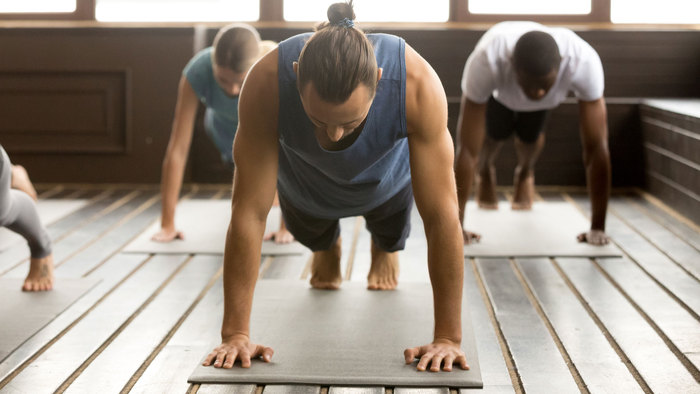Blog »
What I learnt from a year of yoga
Published 15 January 2020. Written by Chris Worfolk.

Is yoga relevant to endurance athletes? In this article, I will discuss the pros and cons that I discovered after a year of practice.
My aims when starting, was to increase my strength and flexibility. My personal trainer described me as the “least flexible person I have ever met.” So, I committed to going twice a week.
December was my yogaversery. A year later and I am still going. Here is why.
What is yoga?
Leaks cover the basics. Yoga is a series of postures connected to the breath. Most people engage with it by attending yoga classes, including virtual lessons, where a yoga teacher guides the session.
There are different forms. Vinyasa flow involves flowing from one posture to the other, whereas in yin, you hold each pose for a long time. Most studios run beginner classes that introduce the core elements.
How do you get started?
I started by going to the beginner's classes.
These are great at any level. While I attend open level sessions now, I still regularly go to the beginner sessions as well, as they are slower and focus on form. I think of it like swimming: no matter how fast you are, the basic drills are still important.
Finding the right classes for you takes time. It is like a spin class: all instructors are delivering basically the same thing. But they all do it in their own way, with different music, a different level of intensity, and different exercises.
Yoga is the same. Some teachers push you harder than others. Some talk more about yoga theory. The best teachers give you options for each pose so that you can choose how deep you want to go.
What is good about it?
I have found it has been great for my strength. I don’t necessarily feel much stronger. But the body scan doesn’t lie: I have gained 2kg of muscle in my core over the last year.
Even if I didn’t have anything to train for, that would fulfil the minimum recommended strength exercises per week.
Second, it is a pretty nice way to spend an hour. It depends how hard the class is, of course, but they can often be relaxing, especially as many classes end in a dedicated relaxation period at the end.
What is not so good?
Flexibility is a bit of an unknown. I do not feel any more flexible. But I have not objectively measured it, so perhaps, like my strength, it has improved.
That said, full distance triathlon is a demanding taskmaster with a heavy workload. So, you could argue that not getting any less flexible is a success in itself.
Second, it consumes time. It is another thing to squeeze into our schedule, which is already full up with swimming, cycling and running.
What about mental health?
Studies have looked at whether yoga improves our mental health.
It does not, but with an important caveat: it does not work better than a control treatment. That is to say, when you compare yoga to other types of exercise, yoga does not have any extra magical healing power.
However, exercise does improve our mental health, and yoga counts as exercise, especially if you are going to a class and spending time with other people (which provides benefits even if you all simply do the class in silence).
Conclusion
If you were hoping yoga was a magical pure for being happier and hyper-flexible, I’m sorry to bash your dreams into pieces. But we know magic fixes do not exist.
Nor does this mean that I think yoga is rubbish. It is good for building strength. And, most of all, you may find it enjoyable! Combining strength, stretching, group activities and relaxation into a single event is a winner for me. So, if you want to, give it a go. You may find you like it.